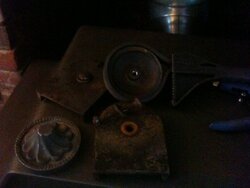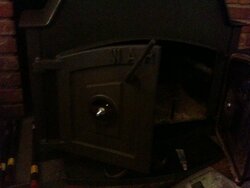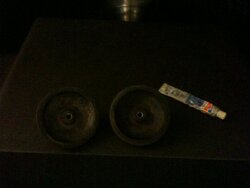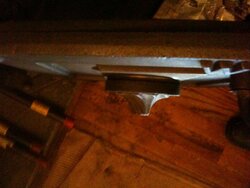I'm having a problem with a Warner Wood Stove. There's two knobs, one on each door that serve to regulate the air feed. The knobs are mounted on threaded posts so that when turned they can close against the doors and pinch off the airflow vents that reside behind them (through the doors). The problem is the knobs are nearly frozen on the threaded posts and before I can turn them far enough the posts turn with them defeating any progress closing or opening the vent. I tried PB Blaster to free them up with minimal results. I can get a vicegrip on the washer that's under the carriage bolt (?) head but that doesn't stop the bolt from turning much. I find it odd that there is a washer under the carriage bolt head. How would the carriage bolt stay fixed? Maybe its not a carriage bolt?! The attached pictures are a top down view showing the knob and the open air gap behind it and an inside view of the door and the vent box with the carriage bolt head as well as a recent cleaned up picture of the front of the stove. Does anyone have a suggestion to free up the regulator caps? Could they work in some other manner than what I described? Right now I can turn them with a strap wrench but it doesn't adjust the opening much. Any advice will be appreciated.
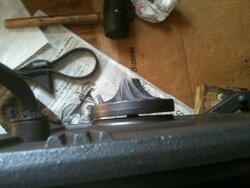
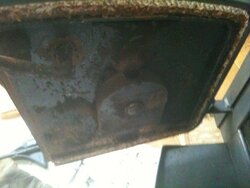
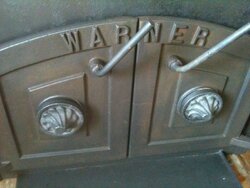





 Then I remembered what you posted mentioning half-nuts. Fortunately I was able the salvage the half-nuts from the carriage bolts and that did the trick
Then I remembered what you posted mentioning half-nuts. Fortunately I was able the salvage the half-nuts from the carriage bolts and that did the trick  I read another post about aligning the cap posts and with a tweek with my rubber mallet achieved a very nice and square "cap seat". So all is well and we're toasty in time for another storm. Thanks for the encouragement and advice
I read another post about aligning the cap posts and with a tweek with my rubber mallet achieved a very nice and square "cap seat". So all is well and we're toasty in time for another storm. Thanks for the encouragement and advice 
